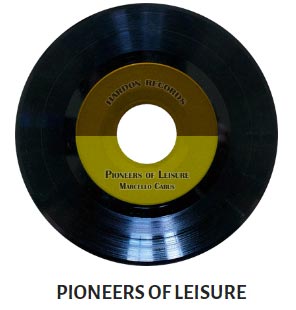The Denver Dog began as something of a psychedelic outpost – a pioneering extension of the San Francisco Haight-Ashbury scene. It fell on fertile ground with Denver’s burgeoning counterculture. Like the Avalon Ballroom, the Family Dog Denver pulled together a panoply of psychedelic artforms, including a world-class lightshow, top shelf poster art, and the cream of rock music, particularly west coast psychedelia. This included Denver’s first encounters with the Grateful Dead, the Doors, the Jefferson Airplane, and Quicksilver Messenger Service to name but a few. While in town, the Dead played Denver’s Be-In on September 24, 1967. Modeled on the archetypal Human Be-In held in San Francisco (January 14, 1967), Denver’s own Be-In took place in City Park with attendance in the thousands. It was a full-fledged public celebration of hippie counterculture featuring the Dead, Captain Beefheart, Odetta, and others. The park was left clean, thanks to the family of the Dog who took care of the Be-In’s details.
But all was not smooth sailing at the Dog. Its success at coalescing the counterculture made the Dog a target of law enforcement. Embroiled in conflict with the law, Canned Heat headlined the Dog three times in less than a year, their song My Crime emerging from the ordeal. The song refers to the Denver police’s heavy-handed enforcement policy that had led to their October 21, 1967 arrest … “’cause the police in Denver don’t want none of them longhairs hanging around.” With police pressure too intense, Chet Helms and the San Franciscans pulled out, leaving the foundering Dog largely in the hands of Barry Fey, who continued to book bands, including Cream, The Mothers of Invention, and the Fugs before Big Brother and Blue Cheer brought it all to a close in June and July 1968 respectively.
With almost no visual documentation, the Denver Dog remains somewhat shrouded in mystery. There is no film of the lightshow, few recordings of performances, and only a handful of photographs of the interior. The most lasting visual record is provided by the phenomenal posters that were produced for the venue. The first sixteen were designed by the cream of the San Francisco psychedelic poster artists – Rick Griffin, Stanley Mouse, Bob Schnepf, Alton Kelley, Robert Fried, and Victor Moscoso. Some of these Denver images rank among the greatest works of the whole psychedelic poster movement. Aside from these magnificent posters, the historical record of the Denver Dog remains principally in the archive of individual memory. The only way to piece together the story, has been to interview as many of those involved as possible. Many of these are documented in the film The Tale of the Dog, which I made with Dan Obarski (2019). Assembling scraps of information and amassing hours of interview footage, we were able to piece together many of the details of this storied venue and this dynamic moment in Denver’s history. These tales also shed light on the “meaning” of the Denver Dog. It provided a forum that brought people together to celebrate a countercultural identity and to enjoy the cutting edge of rock accompanied by an extraordinary lightshow … all in a little space that accommodated several hundred people. It also became a flashpoint for interactions between the police and the counterculture. In short, it was a microcosm of the era. However, it had its own unique, wagging tale. Marcello’s lively stories fit in with our endeavor to document this era, adding invaluable primary source material to our understanding of Colorado’s unique history in the sixties and seventies.
Marcello was there at the Dog. He was there at Denver’s Be-In. He was involved in the transport of marijuana – the very substance at the root of the counterculture’s conflicts with the law. He was there for the brief span of time that coalesced Denver’s counterculture, laying the foundations for Denver’s transformation to the hip city that it is today. The Dog was a critical nexus for the convergence of counterculture in the area, but it was not the only pocket of counterculture. As Marcello’s account relates, the Dog was neither the alpha nor the omega of hip Colorado. From the Denver Folklore Center to communes such as Drop City to the thriving Boulder music scene of the seventies, Colorado nurtured pockets of counterculture, often centered around music. There had been a growing countercultural presence, particularly in the Capitol Hill area, which became known as “Hippie Hill.” The Dog brought it together in the full force of the psychedelic dance concert. The coalescence around rock music, particularly psychedelic rock, was central to the formulation and evolution of the counterculture. The Denver Dog was the nexus that helped bring together a critical mass of like-minded people to begin to effect change in Denver. Marcello offers us a window into this history of hip Colorado’s emergence. Enjoy the trip!
